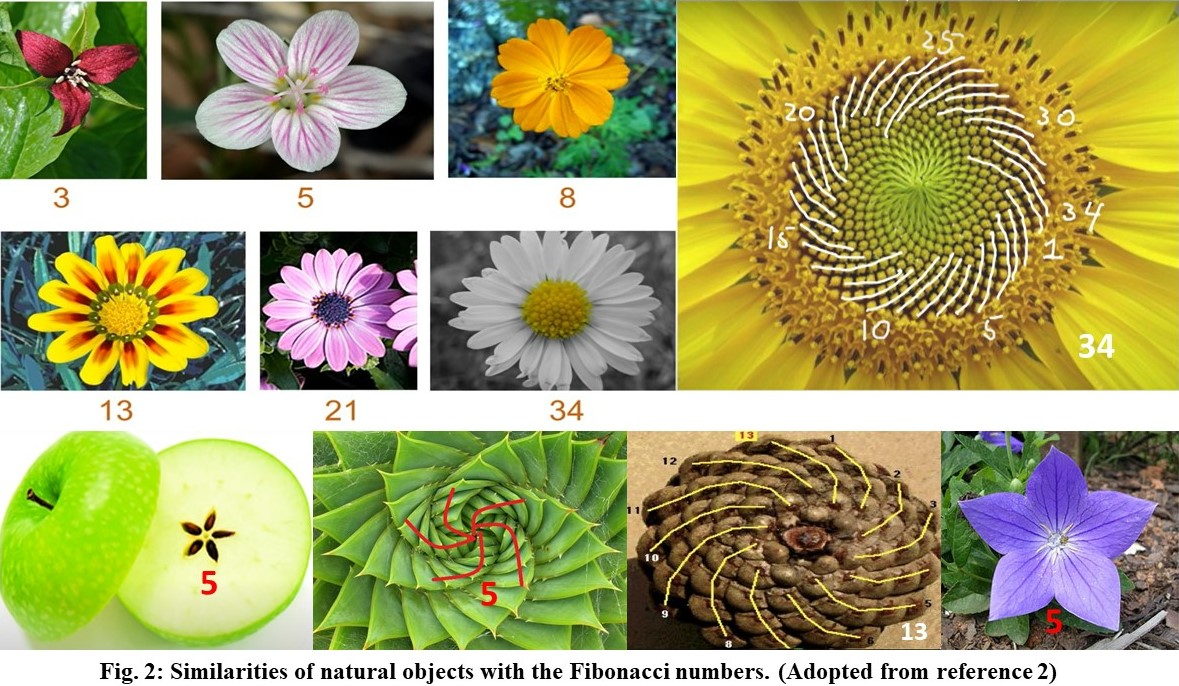The drive of curiosity leads people to travel to numerous places to enjoy and explore natural beauty. Indeed, nature is the treasure house of joy and wisdom. Everyone has some sort of craze for nature, and nature peculiarly loves symmetry. Don’t we think for a single moment why nature looks so beautiful? What is the mystery behind this? Is all the beauty of nature created randomly? Or are there some specific criteria behind this naturally developed beautification? The answers to all these questions are hidden in mathematics; Nature itself being a prominent mathematician.
In 1202, Fibonacci, known as “Leonardo of Pisa”, first inferred a Fibonacci sequence in his book Liber Abaci. He made this series, based on an experiment, on newly born rabbits – one male and one female – after being dropped in a field. After a month, they mated, but still, there was only one pair of rabbits. At the end of the second month, the female rabbit has given birth to a new pair of its species. So, earlier, there was only a single pair, which increased to two more in the field. Each month’s number pattern of pairs was enhancing like 1, 1, 2, 3, 5, 8, 13, 21, 34, 55, 89, 144…. This pattern is popularly known as Fibonacci numbers or Fibonacci series, or Fibonacci sequence. However, the most puzzling thing is that the so-called Fibonacci sequence, very famous during Leonardo’s time, was already familiar in India [1].
Mathematically, if one starts from 0 and 1 and keep adding together the previous two numbers, then it goes like this:
0+1=1
1+1=2
2+1=3
3+2=5
5+3=8
8+5=13
13+8=21
21+13=34…One can go on indefinitely!
Everyone might have heard about the golden ratio, i.e., 1.618. If we start dividing any number of the Fibonacci sequence by the preceding sequence number, the ratio is significantly closer to the golden ratio. If one draws squares constraining the length of its side to follow the Fibonacci sequence, and connects the opposite corners of such squares by circular arcs in the anti-clockwise direction, a Fibonacci spiral can be generated (Fig.1a). Similarly, if we take the ratio between the length and width of the rectangle, we will get the golden ratio. In most of the natural phenomena that may be natural disasters like cyclones, this spiral could be seen. For a very long time, architects and artists have been using this spiral in their works to make them aesthetically wonderful. One can find more incidents of Fibonacci sequences in nature than what apparently perceivable around us. Therefore, it would be a good time with a cup of coffee to compare these natural objects with Fibonacci’s spiral. Few examples have been cited in the following figures [2].

Not only this spiral is visible, but also the number of petals in a flower, number of seeds in the fruit, number of spirals in sunflower (Clock and anti-clockwise both), number of spirals in a pine cone or pineapple, in most of the cases these all amazingly belong to the Fibonacci numbers.

From natural beauty to natural disaster, we could trace out everywhere the effect of Fibonacci sequence or golden ratio, i.e., related to mathematics. I always used to think earlier that the scope of mathematics is limited. Fortunately, after going through all these, it seems apparent to me that it is not merely a subject and a language of Physics but the language of Nature too, encompassing the whole universe to represent.
References
[1] P. Singh, “The so-called Fibonacci numbers in ancient and medieval India,” Historia Mathematica, vol. 12, no. 3, pp. 229-244, August 1985.
[2] “Insteading,” [Online]. Available: https://insteading.com/blog/fibonacci-sequence-in-nature/.
Sabiar Rahaman,
Junior Research Fellow (JRF),
Kavita’s Electrochem Research Group (KERG),
Centre for Nano and Soft Matter Sciences (CeNS), Bangalore

Beautifully written & well explained with clarity. Thank you so much dear Sir for providing vital piece of information. Please do keep writing, people like me get motivated from your innovative thoughts.